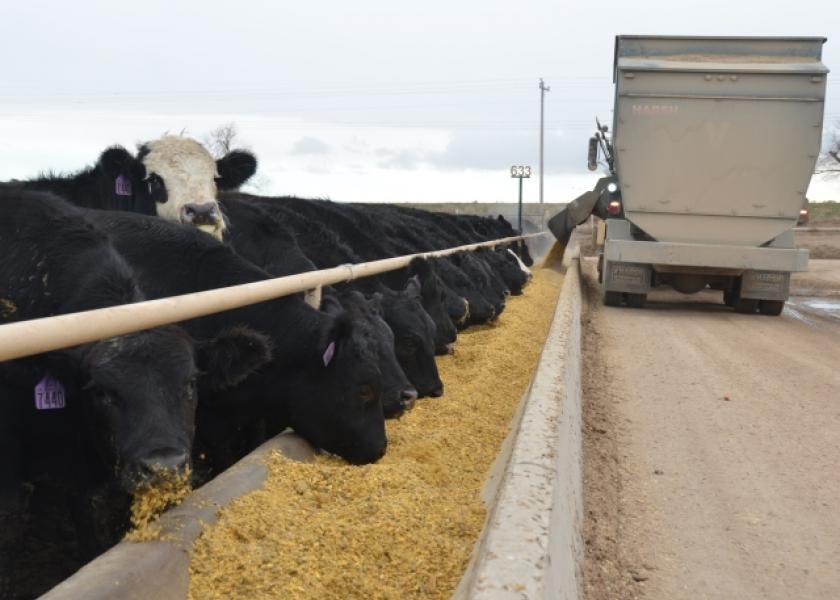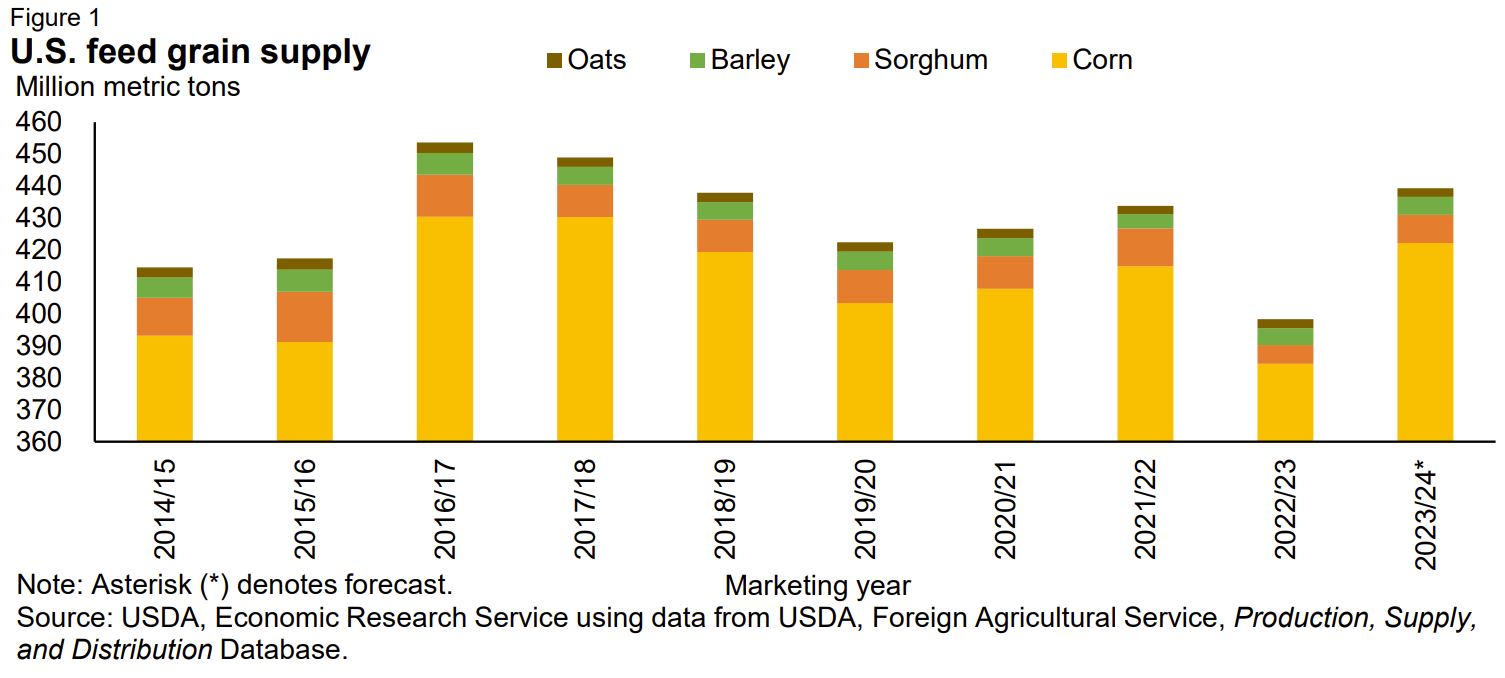Feed Grain Supply Boost Driven by Corn Yield, USDA Predicts

The U.S. feed grain supply is expected to grow by 3.4 million metric tons (mmt) to 439.3 million, propelled by a projected 1.9-bushel-per-acre increase in corn yields for the 2023/24 corn production forecast, reports the USDA Economic Research Service (ERS) in the recent November feed outlook report.
Only partially offset by a 6-bushel-per-acroe reduction in the U.S. sorghum crop, the increase in corn still averages to overall higher projected global and U.S. coarse grain exports this month.
A rise in world corn exports is pushing the record-high trade (for the international October to September trade year) further up, notes the report. An increase in supplies (higher beginning stocks and greater output) exceeds the rise in coarse grain use, boosting stocks.
The USDA's National Agricultural Statistics Service (NASS) increased its national corn production forecast in the November Crop Production report. The projected U.S. corn production for 2023/24 is now 15.2 billion bushels, a 170-million-bushel rise from the previous month. This is attributed to an increase in yields to 174.9 bushels per acre, up from October's forecast of 173 bushels per acre. The harvested area forecast remains at 87.1 million acres.
While yield forecasts were adjusted for some states, major producers like Illinois, Indiana, Minnesota, and South Dakota saw increases contributing to the overall national yield rise. Illinois accounts for over 19 percent of the total increase.
Corn imports during the first month of the 2023/24 marketing year were robust, reaching just over 3 million bushels, nearly matching volumes from September 2022 and 2021 combined. However, with the expected growth in domestic corn production, demand for foreign corn is anticipated to weaken, leaving the 2023/24 corn import forecast unchanged at 25 million bushels. The projected increase in corn production brings the 2023/24 U.S. corn supply forecast to 16.62 billion bushels, 1.5 billion higher than 2022/23, notes the report.
U.S. corn use is expected to grow in line with the projected supply increase. Feed and residual corn use is raised by 50 million bushels to 5.65 billion, supporting the growing number of feedlot placements at the beginning of the marketing year. The corn-for-ethanol fuel use forecast is also raised by 25 million bushels to 5.33 billion, driven by strong ethanol demand. The report notes a slightly lower 2022/23 fourth quarter corn-for-fuel ethanol use estimate, now at 5.176 billion bushels.
U.S. corn exports for the 2023/24 marketing year have started well, with September volumes at 125 million bushels, 25 million higher than September 2022. Export commitments through November 2, 2023, are 31 percent higher than the same period last year at nearly 760 million bushels, notes the report. Combining these factors with a growing domestic supply, the 2023/24 corn export forecast is increased by 50 million bushels to 2.08 billion.
Despite the anticipated increases in U.S. corn use, they do not exceed the projected supply gains, the report explains. Consequently, 2023/24 corn stocks are 45 million bushels higher at 2.16 billion bushels. The average price received by U.S. corn farmers is expected to decrease from last month's forecast of $4.95 per bushel to $4.85 per bushel.
Read More:
Profit Tracker: Feeding Margins Tumble 60%
Your Cattle Forage Analysis Results Are In: Now What?
Peel: Cattle Markets Now and Later








